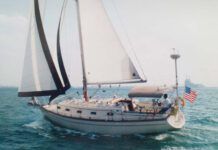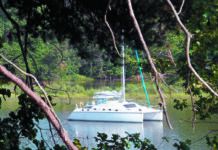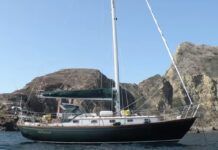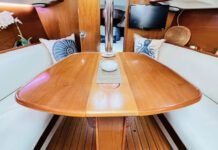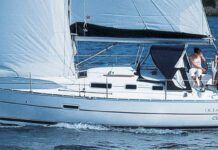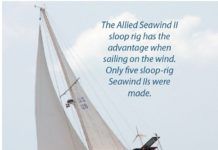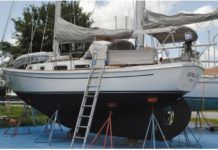C&C 33 Mark II Used Boat Review
When the C&C company shut down operations in 1986, it was big news in the North American boating community. Since the companys formation in 1969, it had been a stalwart of the industry-the leading Canadian builder, by far, and one of the major brands wherever fiberglass sailboats raced or cruised.
Island Packet 350 Used Boat Review
Bob Johnson's 1997 design is roomy and well-made. Though slow to gather speed upwind, she carries her way gracefully.
The PDQ 32 Cruising Cat Used Boat Review
PDQ Yachts in Whitby, Ontario, Canada, launched the Alan Slater-designed PDQ 32 catamaran in 1994 and built 53 of the boats in the following eight years. Practical Sailor first reviewed the PDQ 32 catamaran in April 1997, which happened to be when the test boat for this review update rolled off the production line. Heres a look at what testers have learned from coastal cruising this boat for 18 years and from other owners who live aboard.
Mason 33 Used Boat Review
The Mason 33 was built in the mid and late '80s by the Ta Shing yard in Taiwan, and imported by Pacific Asian Enterprises in California. She is a moderate traditional design that harks back to the CCA handicapping rule of the 1960s. It might best be described as a modern full-keel hull, with a cut away forefoot and sharply turned bilges to reduce wetted surface. Though narrow and short on the waterline compared to modern lightweight fin-keelers, she is beamier, with shorter overhangs, than you would find on a typical 1960s design.
Beneteau 311, Catalina 310 and Hunter 326 Used Boat Comparison
Our review of "entry-level cruising boats" - We chose the Beneteau 311, Catalina 310, and Hunter 326. They seemed to match well in terms of size, sail area, ease of operation, accommodations, and price. Dimensions are comparable, as are working spaces on the deck, the type and arrangement of gear, cockpit size, and space and furnishings below. All are equipped with a suit of sails and headsail furlers.
Beneteau 323 Used Boat Review
Beneteau recently added three new models to its line-up, including this 323 (which is actually closer to 33 feet LOA). It replaces the aging 311, which was only moderately successful in the US market. The new 323 couples good overall performance with a spacious cockpit and living accommodations suitable for four. During our test sail we learned that she's quick, and a bit tender. The Company …
Tartan 31
The Tartan 31 is one of the new line of performance cruising yachts from the venerable-and durable--Grand River, Ohio boatbuilder. In the last few years, Tartan Marine has come out with a range of new models, including the T-28, the 3500 and the 4600. A 41-footer is in the works. Both the 28 and the latest version of the 31 are part of the new Piper series, which are marketed in sailaway condition. Tartan has a reputation for solid construction and good workmanship and that's what the 31 is: solid and well put together. The hull is hand-laminated with alternating layers of chopped strand mat and unidirectional E glass. Behind the NPG/ISO gelcoat there's a layer of vinylester resin, which so far appears to provide the best osmotic blister protection available.
Capable Cruiser: The Seawind II
Allied Yachts secured its place in the boatbuilding pantheon with its original Seawind ketch, which was launched in 1962 and was the first fiberglass boat to circumnavigate, and the Luders 33, which was recognized as a classic design of the era preceding the fin-keel racer-cruiser. Unfortunately, while its products were heading for glory on the high seas, the company was headed for the boneyard, thanks to mediocre management, severe under-exposure, and the vagaries of the boat-buying public. But by the time Allied went out of business for the fifth and final time in 1981, they had developed a reputation for fashioning solidly built (if uninspiringly finished) boats, unabashedly oriented toward cruising.
Seaworthy and Solid Seawind II
The hull of the Seawind II is a solid lay-up. The deck and cabin trunk are balsa cored. The top of the coachroof, in the way of the deck-stepped mast, is cored with solid, filled epoxy for greater compression strength.
Express 34, Hobie 33, Olson 34
Compared to conventional productions boats of the mid-1980s, the Express 34 and Olson 34 were lighter and faster, but still suitable for distance cruising. The Hobie 33, though most suitable for camper-crusing, was designed to be fast yet trailerable and capable of blue-water sailing.






































